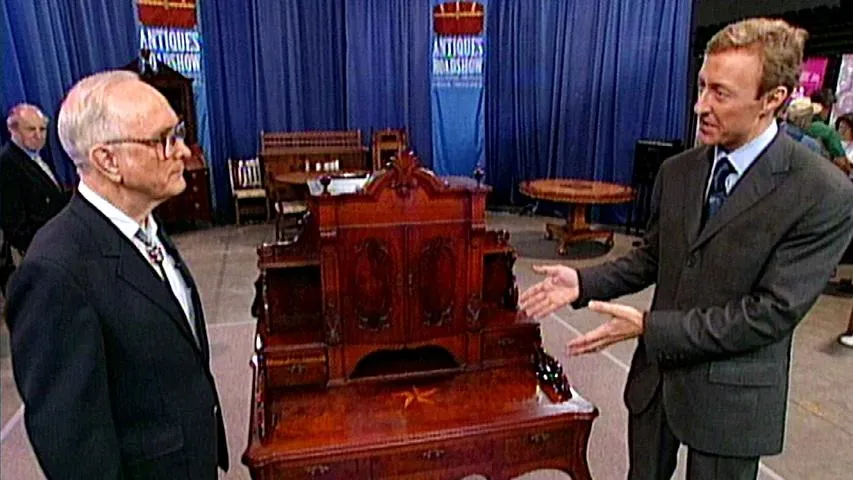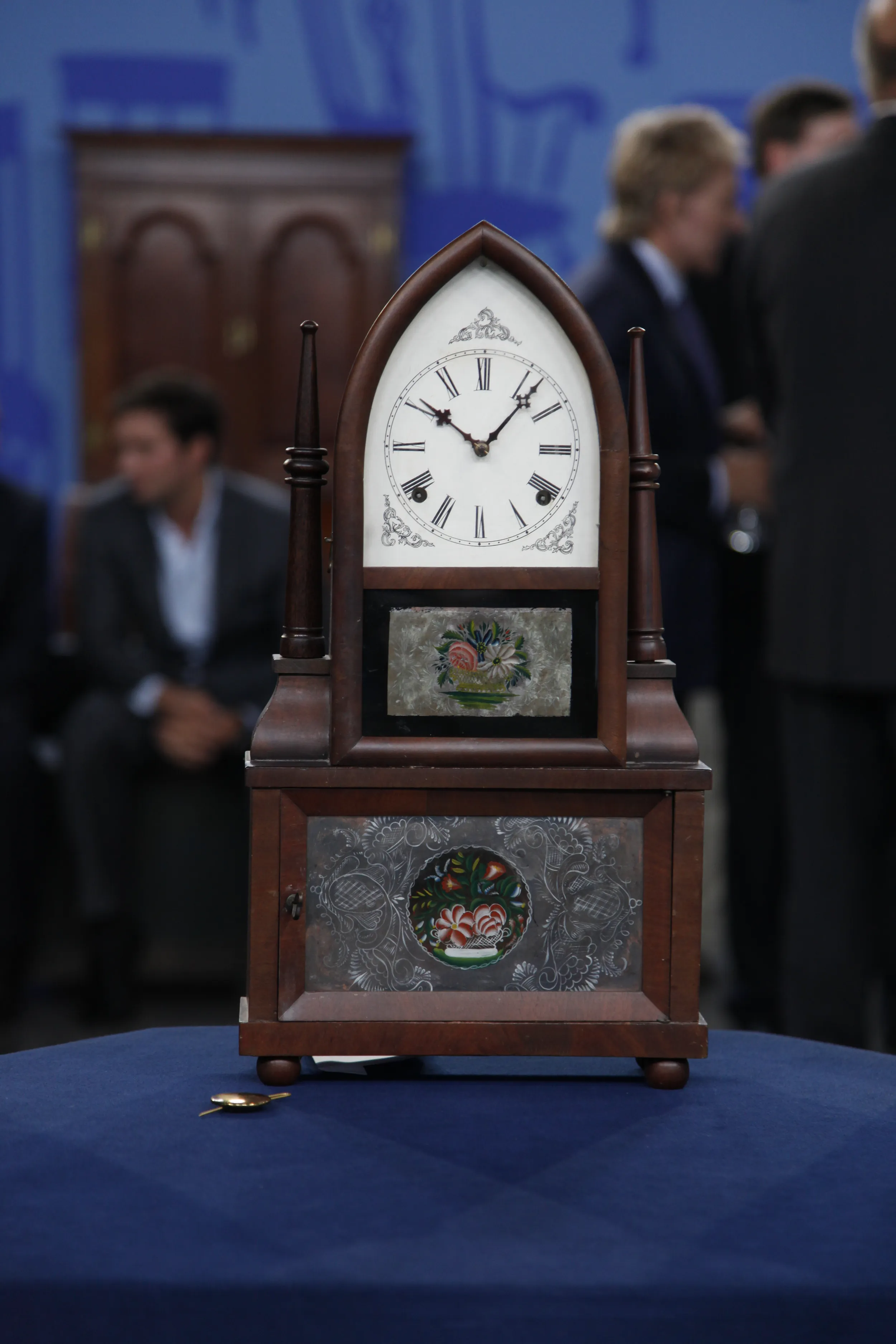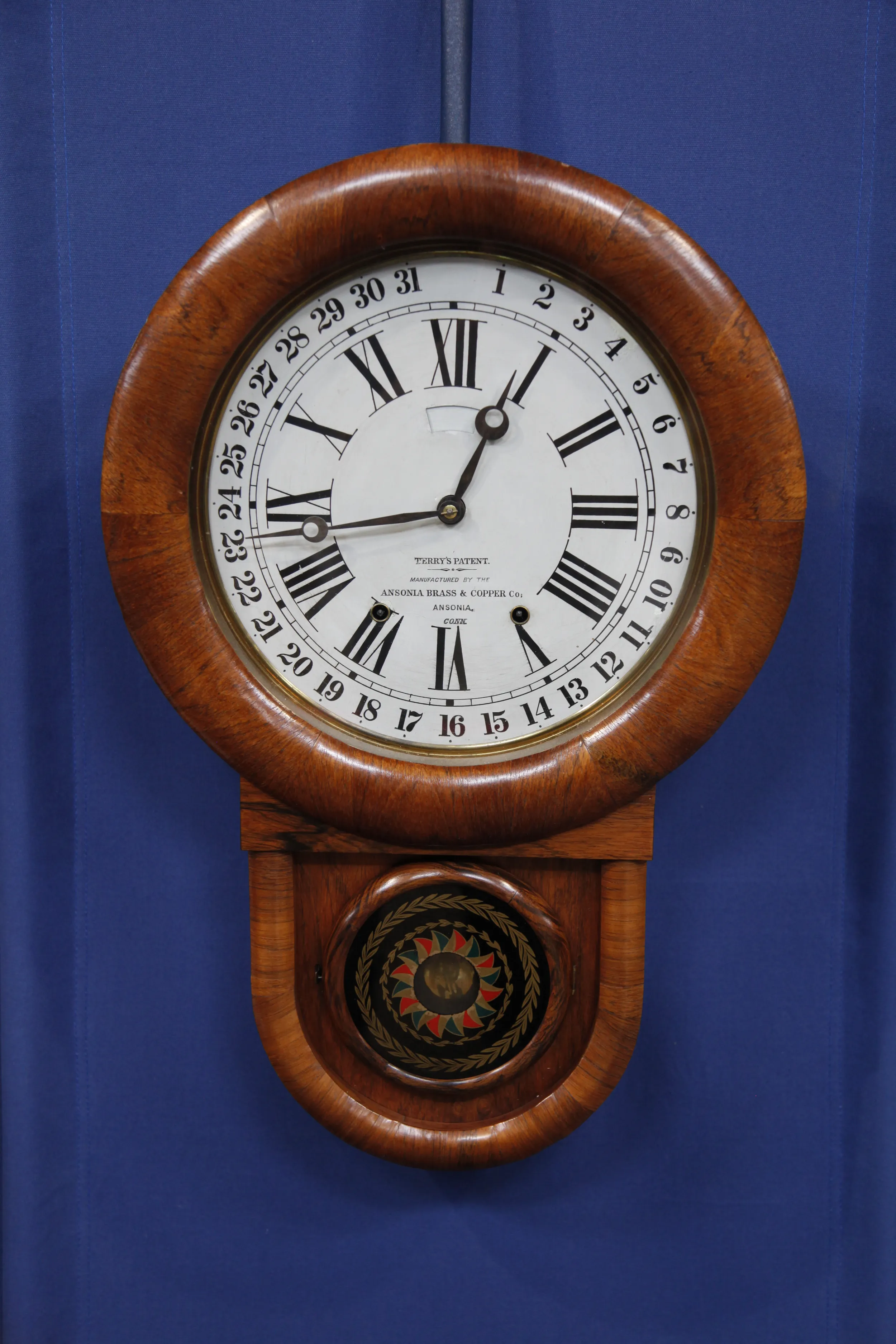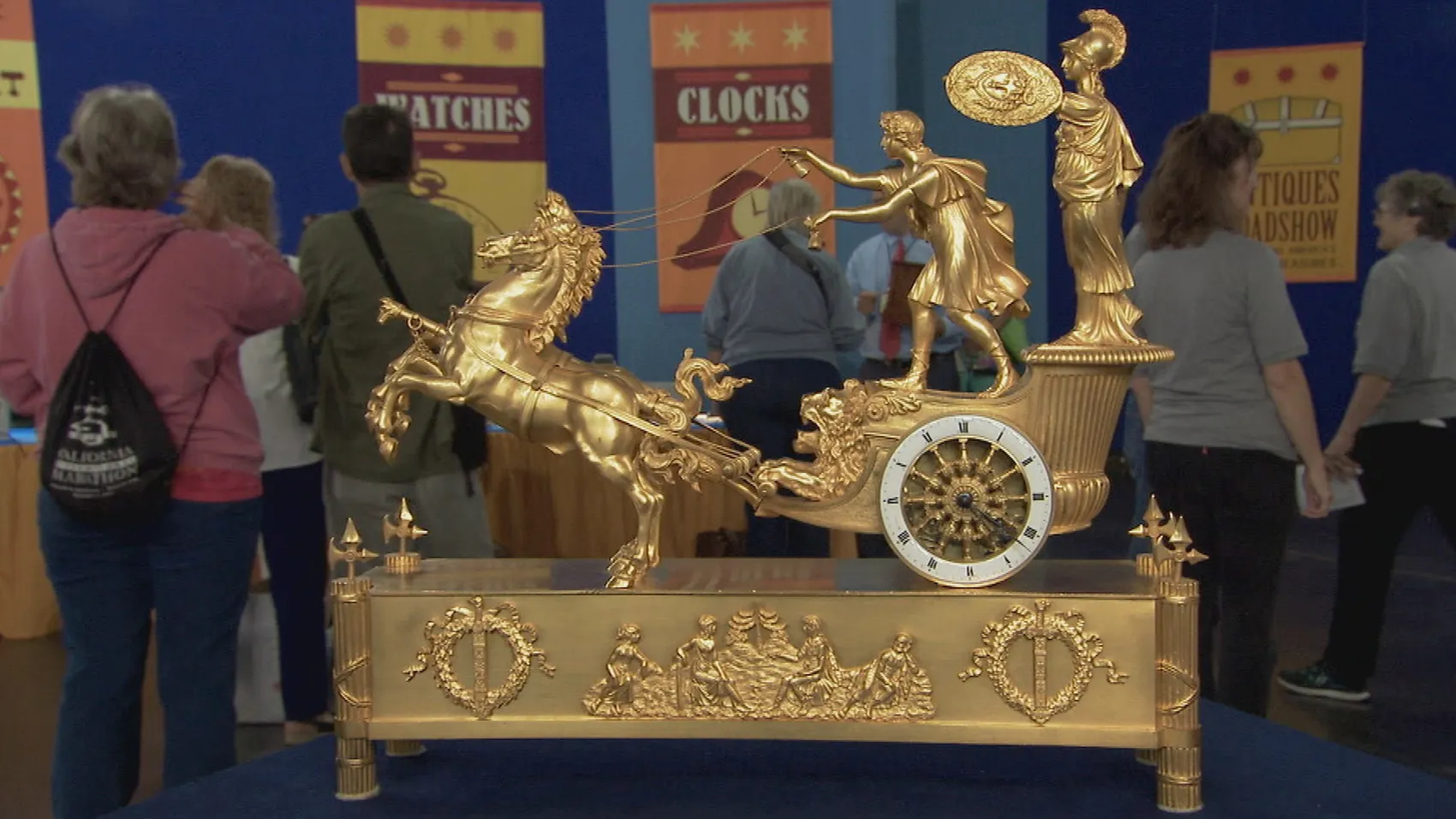GUEST: This actually belonged to my great-grandmother, and they've been in our family ever since I was a child.
APPRAISER: Well, you've brought along some historic photographs too, and they show, among other things, these two items that you brought with you. Has anyone ever told you anything about them before, where they may have been made or how old they might be?
GUEST: No, we just know that they're over 100 years old and I've never been told a lot about them other than when we were children not to touch them.
APPRAISER: Well, that's good advice. They're both examples of French porcelain, of a type made in the middle of last century. There were several porcelain makers active, mostly in Paris and the Paris area in the 1840s and '50s and '60s. The best-known of them operated in Fontainebleau and was called Jacob Petit. And these are typical of the work of Jacob Petit. They're not marked, but if we look at some of the features on the clock-- for instance, the face, which is very delicately painted with rosy cheeks and sort of naturalistic detail. These are typical of French porcelain. I like on this one too, the two figures flanking the clock, which are representative of arts on this side and science on the other. You can see the artistic iconography-- she's holding a sculptor's mallet and she has an artist's palette down here. On the other side she has features of industry and sciences, including a cogwheel down here, which is a giveaway.
GUEST: I see.
APPRAISER: French porcelain of this type is not terribly uncommon in this country. A lot of it was brought here in the middle of last century, either by French immigrants... or you could buy it from retailers and distributors on the East Coast. So the family history is fascinating, and the sentimental value I know is high.
GUEST: Yes, it is.
APPRAISER: But I'm afraid the monetary value is not that strong, owing to them being relatively common types of porcelain.
GUEST: I see.
APPRAISER: The clock, for instance, despite it being in excellent condition, perhaps because you didn't touch it as a child, would have a value of no more than about $800 to perhaps $1,200.
GUEST: Uh-huh.
APPRAISER: And the jardinière I suspect a little less-- under $1,000, but more than $700.
GUEST: I see.











